From Doorstop to Doin’ It Again: Re-aligning the Panasonic AG-W1 Multi-standard VCR
I’m in the process of tweaking and overhauling certain aspects of a trio of websites – this one included – so please bear with some of the changes – but I thought I’d start June with a short piece on what I figured was impossible for someone as mechanically disinclined as myself: re-aligning a very screwed-up vcr.
Way, way back in 1992-ish, I got into the video transfer & conversion business because it seemed to be a decent way to seed the beginnings of a small post-production company. Along with a trio of JVC vcr’s, later a pair of Sanyos, a FOR-A TBC, Hitachi Vectorscope, and a slew of ¾” U-Matic beasts was Panasonic’s AG-W1, the multi-standard conversion VCR which played and could convert between PAL, NTSC, SECAM, and their derivatives. It could also play back S-VHS in a quasi, dumbed-down composite signal, and the conversion was, for the money, decent.
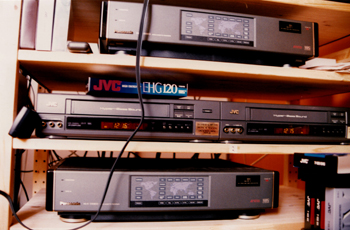
High end broadcast converters did a better job – with the W1, you often saw a scan line flipping across the screen when there was a panning shot – but at roughly $3000, this VCR was a more serious entry into multi-standard vcr’s. When my first machine broke down, I got a second, and when the busted one came back, I had two W1’s, which cut transfer time in half and / or enabled bigger work orders.
Panasonic’s AG-W1 was eventually superseded by two models, and perhaps for a good reason. One day a repairman cold-called about any needed work orders, and he shared what I learned from the previously kaput VCR – with no fan, these heavy machines became hot very fast, especially in summer, and little by little things get fried. Possibly capacitors, as Panasonic’s prosumer line of AG-vcr’s, including their editors, were known to be affected by rotten caps, much like every other major brand than fell for cheap knock-offs in an infamous case of industrial espionage.
I sold the two conversion VCRs and most of the gear in 1999 – I’d gotten out of the business, and the money was helpful for a move – but as the years went on, the need for playing back an occasional PAL tape made me think of the W1. Other manufacturers like AIWA had their own similar styled conversion vcr’s, but the W1 output a really good picture when a tape was played in its original format.
Around 2016, I had a client bring a batch of PAL VHS tapes, and having returned to video post-production with vintage analogue gear, I sought out Sony’s DSC-1024HD – a now affordable broadcast upscaler that also features clean PAL-NTSC conversion capabilities.
When the Sony arrived, it was clear that it was the victim of bad caps, so I sought out its under-model which worked fine, but it didn’t like unstable video.
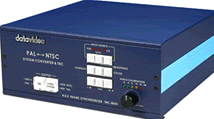
I snapped up a DataVideo STC-1000 converter, but it too didn’t like a few tapes, and the converted NTSC signal rippled vertically.
(Small side-note: The DataVideo is very unique in accepting and outputting video as composite, S-VHS Y/C, and Y Pb Pr component, boosting or reducing volume, outputting a blackburst, and having a small video processor which came in very handy for a client’s tape. A mish-mash of unstable footage from poor quality sources, the DataVideo was the only converter that could handle speckling by reducing hot areas, like a bright open window or light cast on a wall by lamp.)
The W1’s are still easily available on Ebay, but in 2016 prices really varied, and the cheap ones were often beaters, with their faux wood side panels gone so the unit could fit in a rack. In most cases, the W1’s have no remote nor manual.
W1’s in working order fetched several hundred (and still do), and only once in a blue moon would a working model pop up cheap. I ended up buying a beater that lacked a remote – itself really unnecessary, as all features were accessible from the unit’s front flip-down panel – but as the seller detailed, besides powering on, the W1 was a doorstop.
When the W1 arrived, the scuff marks proved it had been well-used, and it would not load a tape. If it did manage to lower the tape tray, it would go on & off. However, if the loading mechanism remained fubar in a specific loading attempt, the gears would click every few minutes but the vcr would stay on, and the W1 could be used as a pass-thru, converting a PAL tape from another vcr – which is exactly what I did with the problem tapes.
So while it was a bulky doorstop with one functional feature – converting between video systems – the purchase wasn’t a complete waste. I moved that summer, dragging the W1 with me, and I kept thinking if only it could play PAL tapes, I could make lovely PAL digital files. It’s a pro vcr, with pro heads, and good tracking for problem tapes.
So a little more than four years after my purchase (er, last week), I pulled out the W1 and thought ‘Let’s see what repair videos are on YouTube, and give it a try.’
Now, YT isn’t perfect, but I did find three surprises. 1) a vintage U.S. how-to repair video on what’s called the Panasonic G tape loading mechanism:
2) a longer UK how-to:
and 3) a compact repair video by Canadian 12voltvids, whose no-nonsense approach, frank tips, and huge knowledge had been useful in the past:
Not unlike the time I upgraded a hard drive in an iMac by myself, repairing the W1 was the most complicated job I’d tackled, and then some. I used I Fix It’s YT video and website to compare procedures, successfully cracked open Apple’s maniacally complicated creature, and did the swap in about an hour, slowly and carefully.
The W1 took two nights + a morning to fix, roughly 12 hours of slow fiddling, a lot of F-bombs, and constant opening & closing of the bottom circuit board under which lay the gears for the loading mechanism.

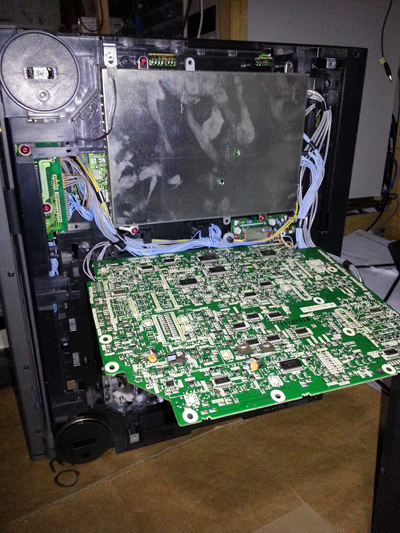
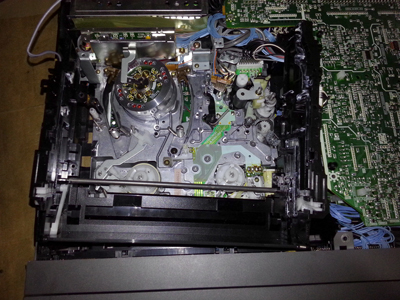
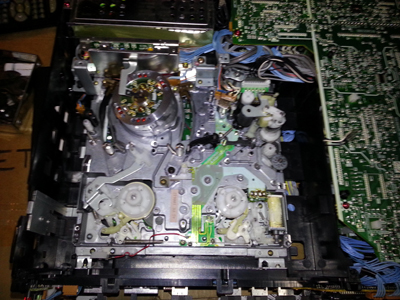
The chance that maybe, just maybe, I could have a conversion vcr and a great PAL machine kept me going. Cheap W1’s on Ebay seemed to have disappeared, and even beaters sell for a few hundred dollars. My total investment in the W1 doorstop had been maybe $130-150 CAD, so if I rendered it functional, I’d end up saving another $150-180.
Being a visually oriented person, seeing re-alignment done on video versus consulting dry technical prose was preferred, and the reason I consulted three videos was due to slight variations in descriptions. 12voltvids explained how to align the planetary gear and tape loading arms, but not the loading carriage in great detail; the lengthy British video did include a few shots from the manual to show how one aligns the reference dots, holes, arrows, and notches, but the US video offered additional info, and was slower paced.
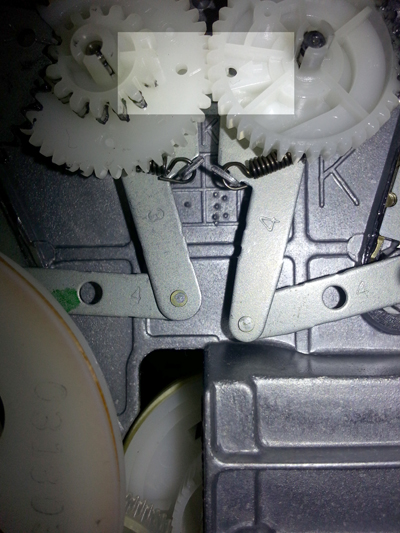
A key in getting the job done properly was stopping, comparing, and verifying the stages in each video, because none of the vcrs in the videos were 100% identical to mine: the tape carriage was a little different, and I had to flip up a hinged circuit board to access the gears.
Part of the reason it took 12 hours is that to access the bottom gears, the circuit board had to be propped up, and to access the upper chassis the vcr had to sit face-up, so there was a lot of keeping the lower circuit board in place with a screw when I was checking the upper level, and propping the board open again to manually turn the centre pulley with its finger holes. This was done innumerable times.
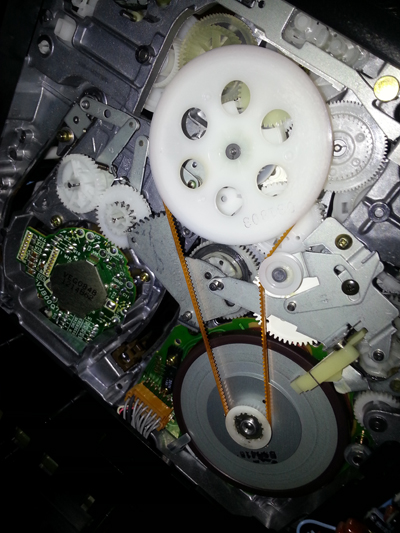
Lastly, there were two major hurdles: the pinch wheel was firmly stuck in rest mode, preventing access to a tall cam gear that also had to be removed so one could align four gears crucial for tape loading. At first I thought the pinch wheel had been freakish riveted, but it turned out whatever lubricant had been added had turned into cement. The pinch wheel just wouldn’t fucking move.
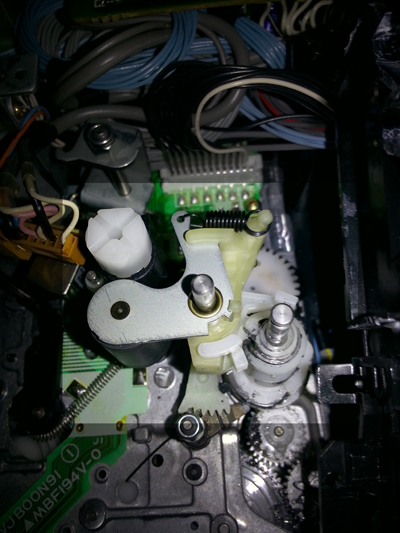
I tried working around it, but it was clear that pinch wheel had to come off, period. So I grabbed a short & stubby screwdriver, placed it under the wheel’s thick hard plastic segment, and used one hand to pull it up while trying to jiggle the whole thing up & down. I couldn’t touch the pinch wheel proper because any pressure would’ve warped it, and then we’d have another misaligned part, so after a lot of brute pulling and MFBPM (more F-bombs per minute), it moved up, and eventually it popped off, revealing dried oily crud that was responsible for messing up the whole tape loading.
Riding the pinch wheel up & down over the adjacent cam gear’s shaft removed inner crud, and I used a plastic SOS pad to scrub off the residual crud on the shafts before the pinch wheel glided easily in place.
Hurdle number two was a dumb one: the front panel of most vcrs can be pulled off after screws are removed, and plastic tabs are pulled back, but the W1 has an extra panel that covers the bottom tabs.
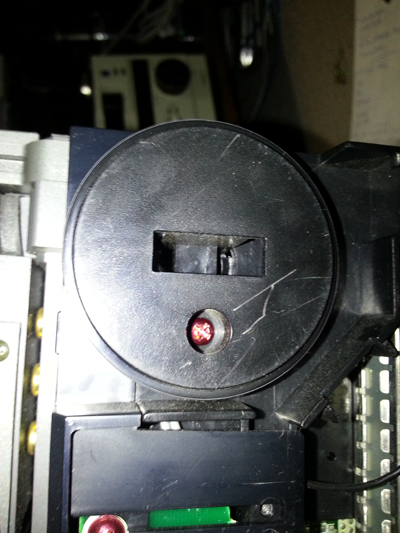
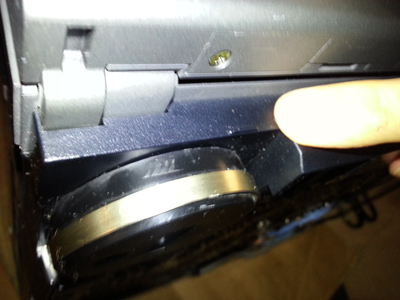
With the front panel just partially detached, I chose to remove the tape carriage in 3 pieces, which meant even after the front panel’s stealth cover was found and proper space was present, the carriage had to be reassembled, re-aligned, and then fitted back into the loading area, where one gear had to align with four to ensure everything would work.
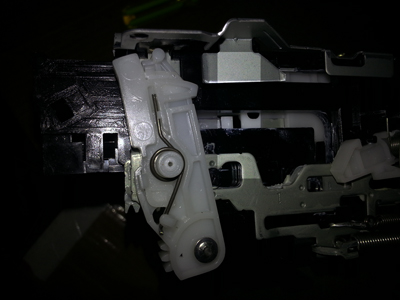
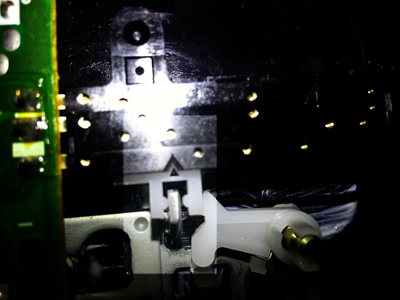
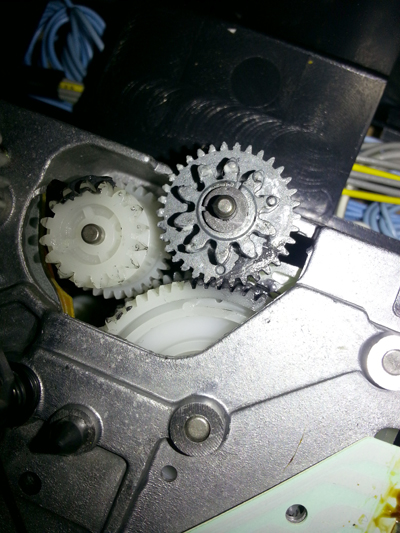
It took several replays of the US and UK videos on YT to get it right, and after the carriage had been nestled back in place, I realized two front screws couldn’t be put back because a metal panel I had screwed back onto the carriage made them inaccessible – not really an issue since the two rear screws + metal top held it pretty snug.
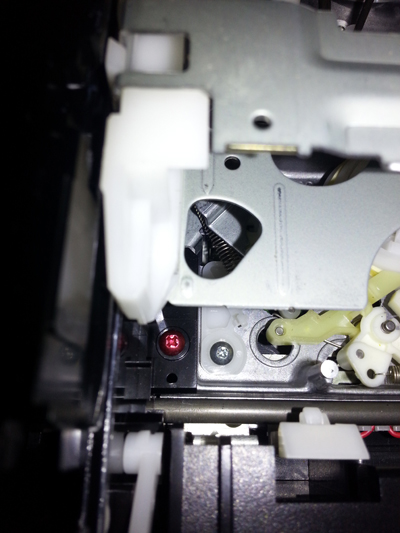
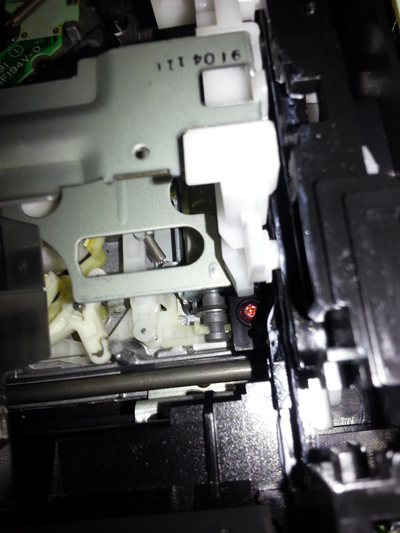
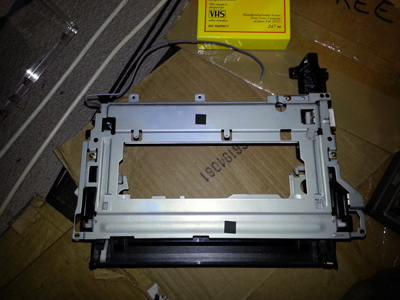
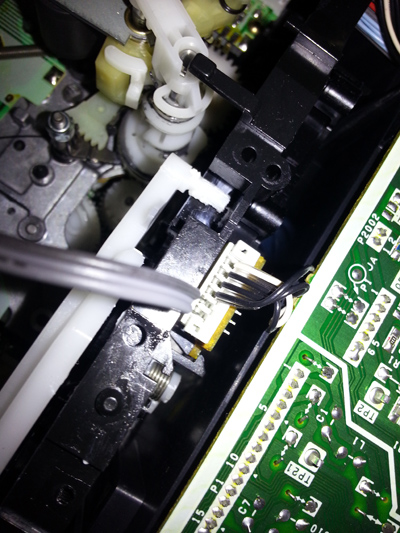

I failed to notice that the reason the tray wasn’t lowering was because I didn’t push the left upper tray tab that enabled the whole tray to lower.
How is re-alignment done? You sort of work in reverse, making sure the tape loading arms and cam gears for the carriage are aligned using those holes and dots and arrows and notches, and most importantly, finger-cranking a wheel (the centre pulley) + pushing the solenoid on the upper side in, as each clockwise winding of the large gear advances the smaller ones, and each push of the solenoid advances the next set of gears which ultimately leads to a videotape being wound and played back / ejected.
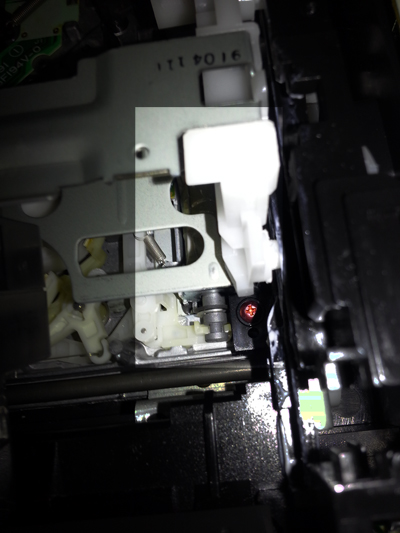
It’s am amazing design – you have to admire the engineering feat of small gears and one solenoid that enables you to watch a movie, shuttle, fast-forward, rewind, record, and eject, and the huge molded chassis into which everything is fitted. Re-alignment is daunting, frustrating, and requires patience for the non-mechanically minded, but the moment the vcr accepted a tape, loaded it around the head, and played back PAL flawlessly, things felt great, plus the W1 was able to handle the tape’s wonky HiFi.
It also meant that this perfectly fine vcr had been a doorstop for a long while – how long it rested on a shelf at the seller’s or former owner’s is unknown – but the 12 hours were a valuable learning experience, because in addition to knowing how to replace a toilet washer and replace a hard drive in an iMac, and I add re-align a Panasonic G-mechanism.
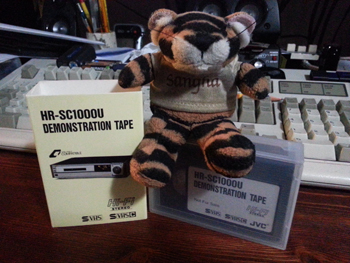
Which of course emboldens one a little; if my AG-1980 gets funny, I might be able to fix its mechanism, too, but the real challenge will be my JVC HR-SC1000U, the biggest piece of shit ever designed by its maker.
Its main feature, along with stellar sound, multiple inputs & outputs, and editing features, was a big tray that slid out, into which you placed a big VHS or S-VHS tape, or nestled a smaller C-format tape. JVC made a VHS version, but this was the high-end creature which did not require an adapter for the VHS-C and S-VHS-C camera tapes.
Within a short time, it had gone from functional to tape eater, to music amplifier, and then doorstop and mechanical prop; the latter its main status for maybe 20 years.
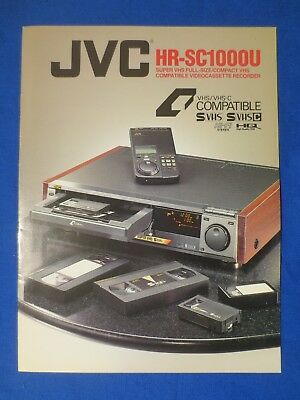
I doubt this dud can be fixed, and even if so, it still has a history of having a paranoid solenoid that doesn’t like shuttling tape near the end of the spool, but if I could fix it, I can stop calling it a piece of shit, I’d have a functional antique, and I could upload the demo tape that came with this monster, which JVC included to wow its owners and outline its core features.
I digitized it a year ago, so if the JVC can be fixed, I’ll post it. It’s quite quaint:
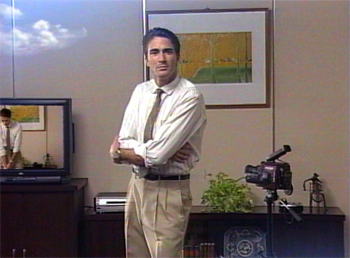
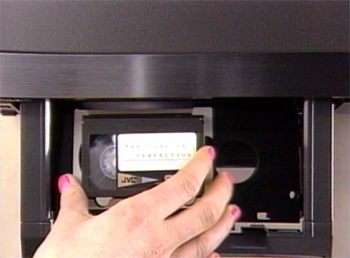
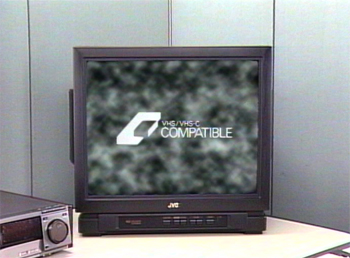
As for the Panasonic AG-W1, she looks happy, snug between a pro-level Panasonic player (special thanks to Hamza for the donation!), the Sony converter-upscaler, and the other vintage gizmos which enable playing back, converting, and digitizing tape to ProRes, and bouncing digital footage to tape for my own and client projects.
The final lesson learned: sometimes it’s okay to swear.
FYI: Instagram video of the vcr making Bad Sounds, and working properly as it loads, plays,and ejects a PAL tape.

Thanks for reading, and probably by the next blog I’ll have a more organized site, with a section on some of the custom services offered at Big Head Amusements.
Mark R. Hasan, Editor
Big Head Amusements
